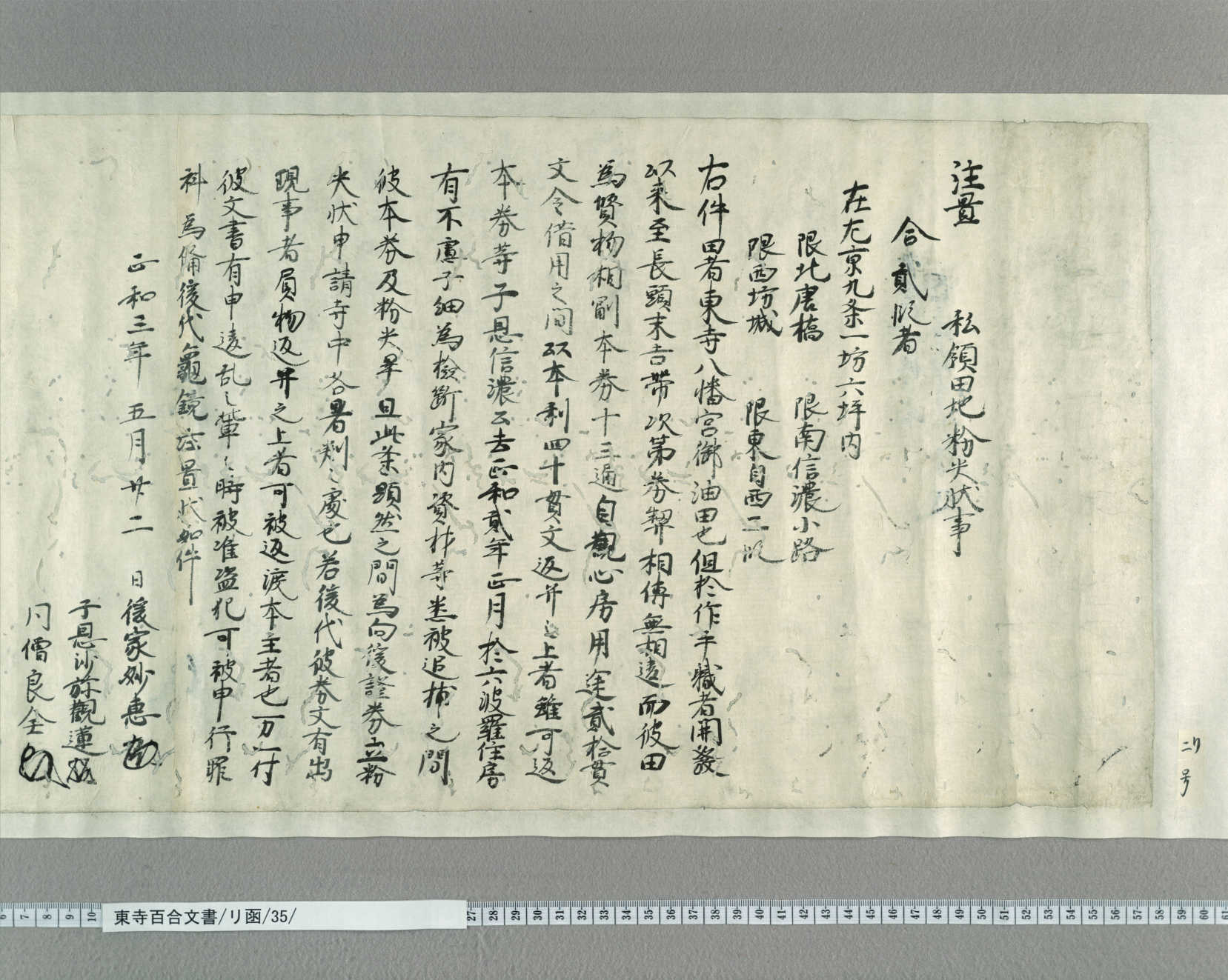There are documents called anmon (案文). Although the word today means “a draft” in Japanese, anmon is actually a manuscript copy of shomon (正文, the original document). Anmon was not only kept as a spare, but also used in a wide range of situations.
Anmon was used in various ways. For example, when an original land deed was lost, a new document called funshitu-jo (紛失状) was drawn up based on the anmon.

The document above is an example of funshitu-jo, which was drawn up as a substitute for honken (本券, the original documents pertaining to land rights), issued to Goke-myoe (後家妙恵). It seems that Goke-myoe borrowed money on the security of land and left the honken to the lender. The honken was lost when it was under the care of the lender, and was never returned even after the debt was paid off.
Anmon was also used for land transactions.

The document above is baiken (売券, a certificate to prove that an item has been sold) written when a monk named Kaga-kaizo (加賀快増) sold his land called Yon-no-tsubo (四の坪).

The document above was attached later to the first document (Item (230-1) of Box-me), and the handwriting suggests that these two documents were written by the same person. The character “han (判, seal)” written under the two senders’ names indicates that there were signatures on the shomon at the same place, implying that this document is a manuscript copy. The two documents were supposedly both written by Kaga-kaizo at the same time.
In medieval times, when someone sold land, the document the seller obtained when he first bought the land were handed over to the purchaser together with a document newly drawn up pertaining to the cession of rights to the land. If the seller only wanted to sell a part of the land, however, the original document was not simply given to the purchaser because it would mean the title to the entire land was alienated. Kaga-kaizo, therefore, drew up an anmon of the baiken he obtained when he bought the land (land of two dan, which is approximately 2000 square meters, including Yon-no-tsubo), and put his kao (花押, a mark used as a signature) on the reverse side of the document, whose front side states that “Yon-no-tsubo is defined as the lot of a dan,” meaning only the title to Yon-no-tsubo was alienated to the purchaser.

This practice was referred to as “ura-wo-waru (裏を割る, split the reverse)” or “ura-wo-fujiru (裏を封じる, seal the reverse),” and the second document (Item (230-2) of Box-me) was written following this practice. This shows that anmon whose “reverse was sealed” was as valid as the shomon. This anmon ends with a sentence stating, “As I have sold the lot, I wrote on the reverse of the shomon that I have sold the lot, and I have sealed the reverse of this anmon. April 3, the fourth year of Eikyo, Kaga-kaizo (kao)”; Kaga-kaizo wrote at the end of the anmon that he had written that he had sold the lot on the reverse of the shomon, which was left under his care, and that he had “sealed the reverse” of the anmon.